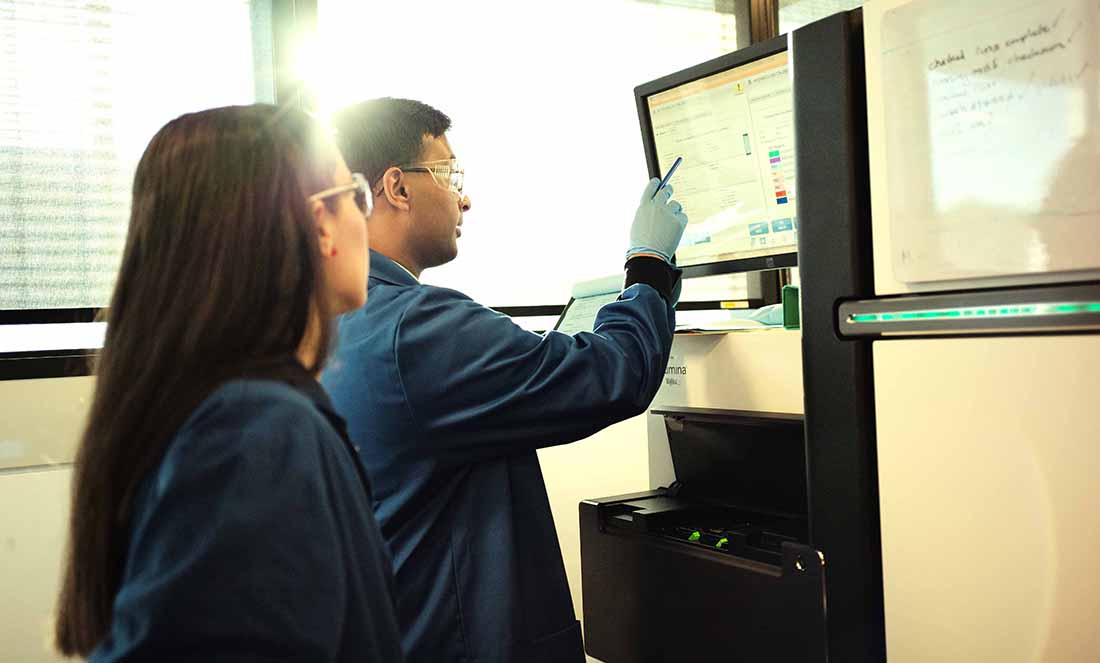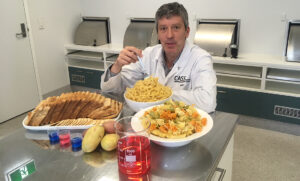But unlike magic crystal balls, our genome can reveal some actual facts about our inner workings.
Our amazing genome
Quick flashback to 2001. The world was awed when the very first sequence of the human genome was officially revealed. The feat took an international group of scientists over a decade to complete and had a hefty price tag of about US$2.7 billion.
Today, you can get your genome sequenced for a few thousand dollars, data analysis included. In Australia, for example, for about $6400, Genome.One will sequence and analyse your genome.
The price includes a detailed report about your chances of developing more than 49 conditions, says Dr Marcel Dinger, CEO of Genome.One. “These include 31 types of cancer and 13 heart conditions where monitoring and intervention can be of benefit, as well as the body’s predicted response to more than 220 medications,” he says.
So what do you get for your money? According to Genome.One, besides your genome sequence, you will also get a head-to-toe physical examination. This means a physiology review and analysis, an extensive pathology test and a meeting with a dietitian and clinician. The results from all these analyses are interpreted against your genomic background to assess what are the best approaches to incorporate into your day-to-day activities.
“The service is delivered by a team of health professionals who can offer information and expert interpretation of your genome,” says Marcel.

But your genome can reveal a lot more than pessimistic probabilities.
It can tell you, for example, if you are missing big chunks of DNA present in other people, which could potentially be linked to health problems. It can also tell you if your genome hosts non-functional genes, also known as pseudogenes.
Don’t worry, it is fairly common.
The 1000 Genomes Project, which ran from 2008 and 2015, analysed the genome of more than 2500 people from around the world. Among their many findings was the existence of dozens of these pseudogenes in all individuals analysed. Such information can inform doctors about our risks of developing anything from autoimmune diseases to schizophrenia.

Sequencing our genome can even tell you something about your distant past and the odd mating choices of your ancestors.
Your mingling ancestors
Some 50,000 to 100,000 years ago, the ancestors of modern humans were not alone. They lived among other Homo species, like Neanderthals and Denisovans. And they shared more than just a common location.
It turns out that Neanderthals and Denisovans interbred with humans every now and then. As a result, some of us carry portions of DNA that can be traced back to Neanderthals and Denisovans.
For example, a 2016 report found that some of these Neanderthal genetic variants were present in modern Europeans. The study also found that some of these variants were correlated with skin and blood disorders and even with an increased risk of depression.
Besides revealing ancient amorous adventures, analysing your genome also serves more practical purposes, like informing you what drugs suit you best.
Genes and drugs
In 2016, American science writer Carl Zimmer decided to have his genome sequenced. The results were analysed by a small army of scientists and published in a three-episode story. Among the results revealed was a mutation on a gene that codes for an enzyme called NAT2. This enzyme is responsible for breaking down caffeine and other toxins of similar structure.
Because of this mutation, Zimmer found out that his body is not as efficient as it could be at breaking down certain toxins and certain medicines, so reducing or eliminating coffee or any products containing these compounds would be a sensible approach.
Here in Australia, Genome.One’s own CEO had his genome sequenced, revealing some potentially important results. “In my case, whole genome sequencing revealed a likely sensitivity to a commonly used general anaesthetic. I would want that in my electronic health record, and if I were ever in hospital, it would be clear to the anaesthetist that they should use a different formulation,” says Marcel.

“In my case, whole genome sequencing revealed a likely sensitivity to a commonly used general anaesthetic. I would want that in my electronic health record”
So, if you have a few thousand dollars to spare, why not have a peek at your genome? It may reveal some interesting facts about your genome and could even spare you some nasty surprises.
“Genomic testing is useful for people who have a genetic condition or who are interested in understanding more about their current and future health risks to take control of their health and potentially prevent disease,” Marcel adds.









